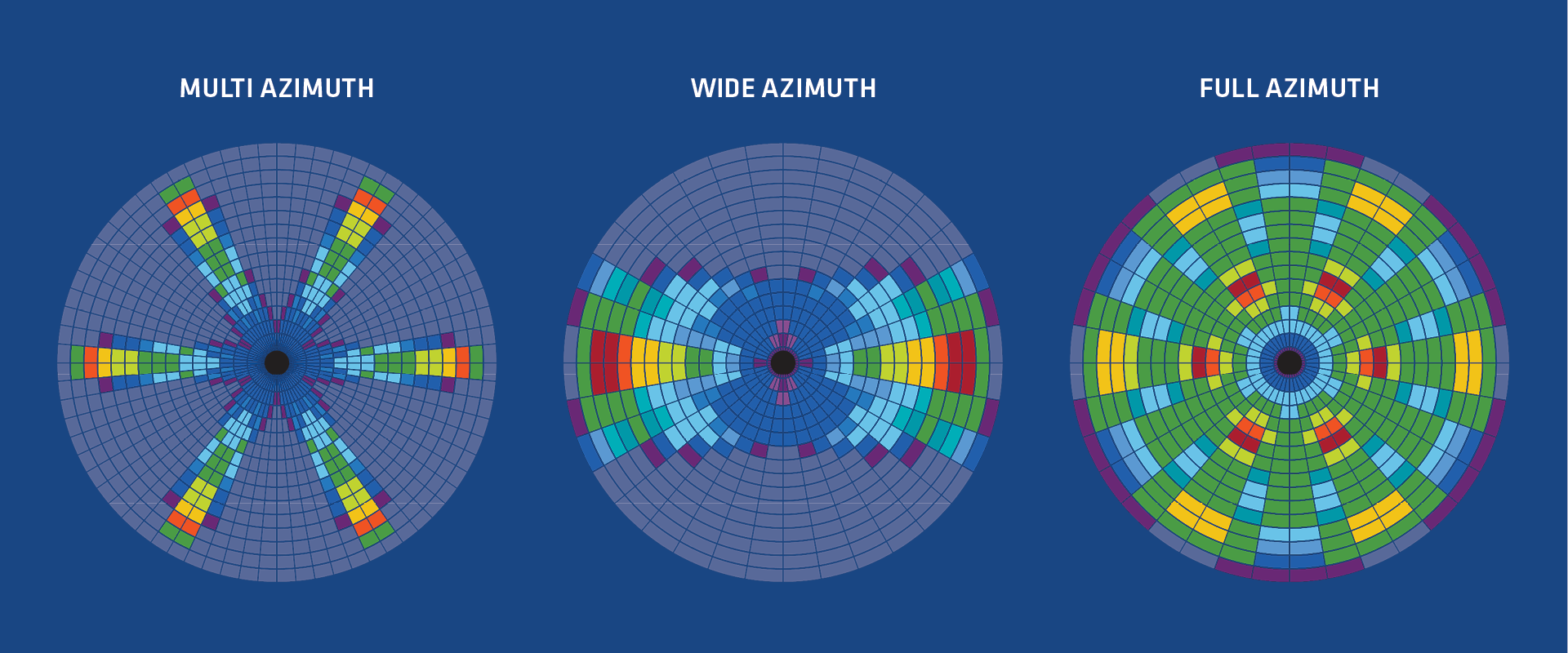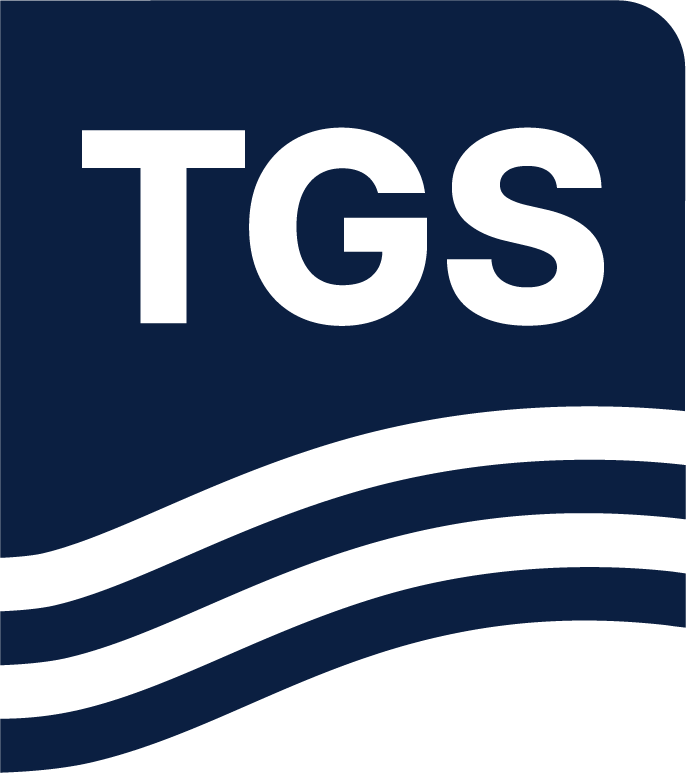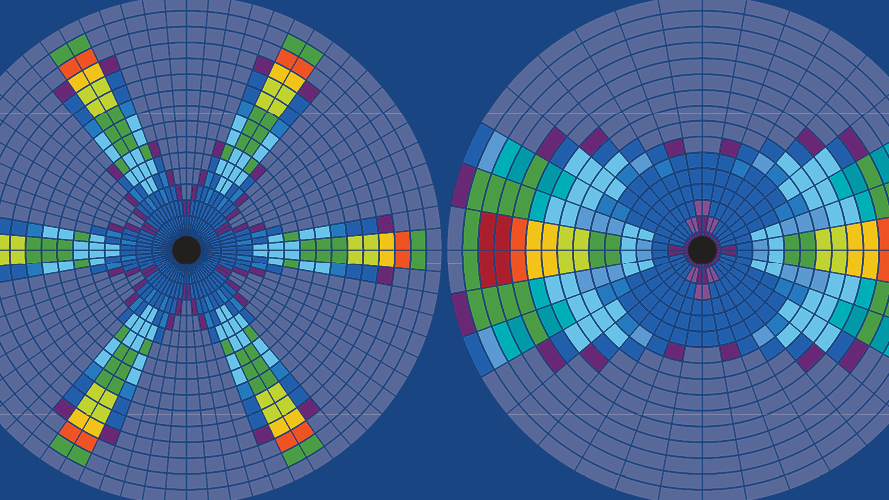Azimuth Sampling
Offset-azimuth Coverage Links to Depth Imaging Workflows
Advantages of Azimuth Sampling
Achieving Uniform Sampling in Difficult Survey Scenarios
The offset-azimuth coverage for multi-azimuth surveys (refer to the rose diagram below) is characterized by reasonably continuous azimuthal coverage for the shorter offsets, and quite abrupt azimuth contrasts at longer offsets. For complex structural settings compounded by laterally extensive and rugose salt bodies, complex wavefield propagation effects can create complex coherent noise and significant target illumination variations that render conventional imaging workflows quite useless.
High-end shot-domain imaging workflows using reverse time migration (RTM) can be more successful when more uniform offset-azimuth coverage for all offsets is acquired using multi-vessel wide-azimuth configurations or well-sampled ocean bottom node deployments. In cases where ultra-long offsets, longer than maybe achievable using dual-vessel extended long offset survey designs, are required for FWI to provide the deep models necessary for RTM imaging, a combination towed-streamer and OBN survey strategies may be necessary. This can provide the ultra-long offsets for FWI to high-grade the subsalt imaging, or hybrid streamer-OBN acquisition with the simultaneous deployment of towed-streamer and OBN sensors may yield the necessary offset-azimuth sampling.
In the most challenging scenarios, standalone OBN acquisition with dense OBN spacing, large receiver arrays and significantly larger shot grids represent the most uniformly sampled data platform, though also the most expensive.

Let’s Discuss Your Acquisition Needs
With the industry’s most diverse fleet and integrated expertise, from survey design and acquisition to seismic data imaging, TGS delivers trusted, tailored solutions for complex exploration challenges.
Learn More About Our Fleet
Discover the capabilities, configurations and proven performance of our diverse fleet. Built for reliability and efficiency, our vessels are ready to meet your exploration needs, anywhere in the world.
Start the Conversation
Every project is different. Talk to a TGS expert about your specific acquisition requirements. With decades of trusted experience and integrated capabilities, we’ll help you design the right solution from the start.


